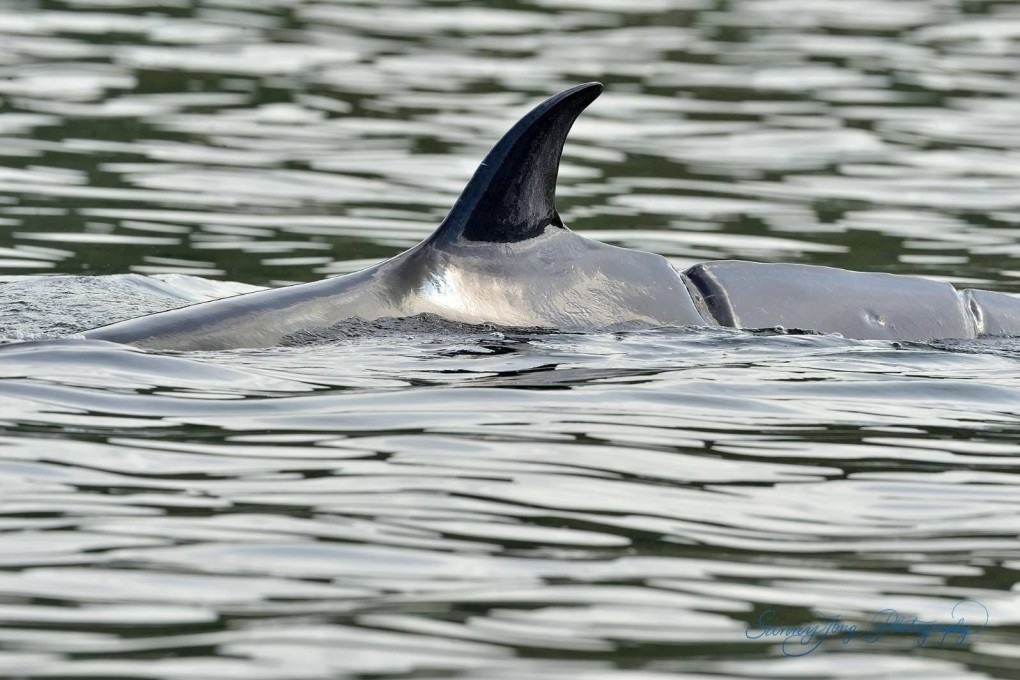Hong Kong marine experts spot changes in feeding pattern of injured Bryde’s whale, raise concerns over attention on animal
- Mammal feeding for shorter periods of time and taking longer breaks between meals, scientific officer Compass Chan says
- Images of two large wounds on whale’s back and reports of boats swarming animal spark safety concerns

Marine experts have detected changes in the feeding behaviour of a Bryde’s whale spotted in Sai Kung, warning it could be a result of increased human activity around the mammal following its rare arrival in Hong Kong waters.
Concerns about the health and safety of the whale, which was first spotted in the city on July 13, have heightened following images of two large wounds on its back and reports of boats swarming the mammal last weekend.
Compass Chan Tsz-nam, a scientific officer with the Ocean Park Conservation Foundation, told the Post on Friday that while the whale appeared to be in a stable condition, it was feeding for shorter periods, taking longer breaks between meals and also foraging in shallower waters.
“We guess it’s because of what happened during the previous weekend with the number of people going out into the waters,” he said. “It’s raising concerns.”

Images provided to Ocean Park and the Agriculture, Fisheries and Conservation Department showed tourist-filled boats within just a few metres of the whale, despite repeated calls from authorities and conservation groups to maintain a distance of at least 100 metres (328 feet).